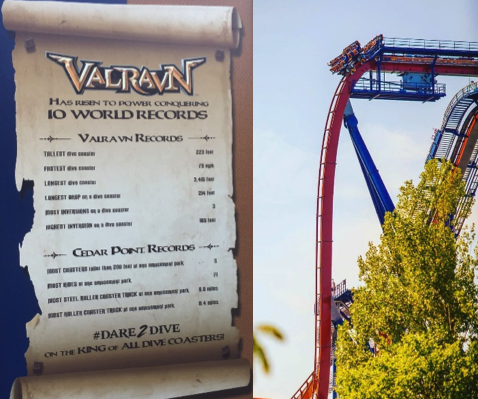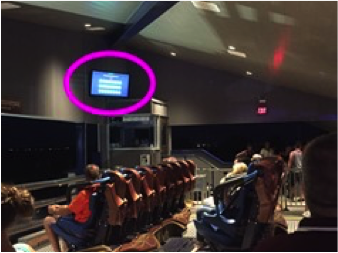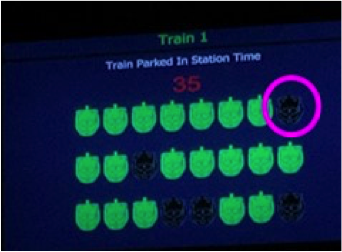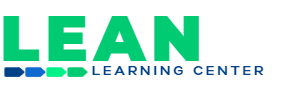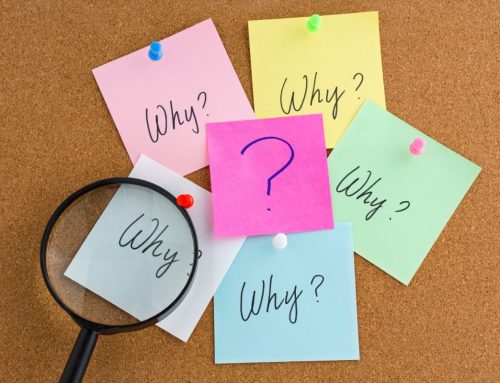In part one of this series, I focused on hard lessons learned by Kodak, who had the technology and capability for the first digital camera back in 1975, but was beat to the digital market by their competition because they became complacent with their monopoly in the 35mm camera market. It certainly was a sad lesson, but just as time can heal old wounds, time can also minimize our sense of urgency, so in part two of this series, I wanted to share a more recent example of building a sense of urgency and embracing continuous improvement as a competitive advantage to remain at the top.
 My family and I are roller coaster junkies, spending approximately 20 days annually at Cedar Point, an amusement park in Sandusky, Ohio. In the 20+ years that I’ve been going, I can always remember the park offering the latest and greatest innovations in ride technology to its guests and maintaining an obsession for breaking world records for both speed and height. I will highlight a few of the “heart stoppers” that have actually forced me to pause over the years and ask “do I really want to do this?” before I took the plunge. It began with Magnum XL200 in 1989, which represented the world’s first hyper coaster at over 200 feet tall and a speed of 72 miles per hour. The obsession produced the world’s first giga coaster, Millennium Force, at over 300 feet and a speed of 93 miles per hour, followed by Top Thrill Dragster, the world’s first strata coaster at over 400 feet and a speed of 120 miles per hour.
My family and I are roller coaster junkies, spending approximately 20 days annually at Cedar Point, an amusement park in Sandusky, Ohio. In the 20+ years that I’ve been going, I can always remember the park offering the latest and greatest innovations in ride technology to its guests and maintaining an obsession for breaking world records for both speed and height. I will highlight a few of the “heart stoppers” that have actually forced me to pause over the years and ask “do I really want to do this?” before I took the plunge. It began with Magnum XL200 in 1989, which represented the world’s first hyper coaster at over 200 feet tall and a speed of 72 miles per hour. The obsession produced the world’s first giga coaster, Millennium Force, at over 300 feet and a speed of 93 miles per hour, followed by Top Thrill Dragster, the world’s first strata coaster at over 400 feet and a speed of 120 miles per hour.
 This year, Cedar Point unveiled its most recent world record breaking dive coaster, Valravyn, the tallest and fastest in the world with a 10-second pause at the top of a 223-foot hill with a perfect view of Lake Erie. While the most recent addition to their coaster lineup was impressive offering the speed, height and thrills that their customers have come to expect, for me, it wasn’t as impressive as the process that I observed at the top of the ride platform.
This year, Cedar Point unveiled its most recent world record breaking dive coaster, Valravyn, the tallest and fastest in the world with a 10-second pause at the top of a 223-foot hill with a perfect view of Lake Erie. While the most recent addition to their coaster lineup was impressive offering the speed, height and thrills that their customers have come to expect, for me, it wasn’t as impressive as the process that I observed at the top of the ride platform.
The first thing that I noticed was visual management boards that communicated time to the ride attendants.  The clock starts when the train enters the station and people begin to disembark. The clock begins to run until new riders are loaded, secured and the train is launched. My assumption is that there is a time goal that is communicated to the ride attendant so that they know if they are on or off pace in launching trains. The second visual management technique that caught my eye was the visual of the train itself. When a rider sits in the seat and the restraint locks, the rider’s seat illuminates in green on the screen, indicating that the seat is secured. By looking at the screen, the ride attendant can immediately identify an abnormality on the train and focus their efforts there. (For the record, I was the abnormality noted in the picture as I was spending my time taking the picture rather than securing my restraint.) By focusing the ride attendant efforts, Cedar Point is able to improve the customer experience by decreasing the wait time associated with loading and launching a train.
The clock starts when the train enters the station and people begin to disembark. The clock begins to run until new riders are loaded, secured and the train is launched. My assumption is that there is a time goal that is communicated to the ride attendant so that they know if they are on or off pace in launching trains. The second visual management technique that caught my eye was the visual of the train itself. When a rider sits in the seat and the restraint locks, the rider’s seat illuminates in green on the screen, indicating that the seat is secured. By looking at the screen, the ride attendant can immediately identify an abnormality on the train and focus their efforts there. (For the record, I was the abnormality noted in the picture as I was spending my time taking the picture rather than securing my restraint.) By focusing the ride attendant efforts, Cedar Point is able to improve the customer experience by decreasing the wait time associated with loading and launching a train.
 The ride platform illustrated to me that Cedar Point, who manufacturers nothing but a customer experience, has an established sense of urgency. They recognize that world records are temporary and that there will always be competition lurking in the shadows looking to take their record away. World records alone will not keep people returning to their park if a guest can only complete 4-5 rides per operating day because the queue lines take hours. Cedar Point’s competitive advantage is found in their daily focus to improve the customer experience by increasing the value-added ride time. So, to the Cedar Point team, I say “thank you” and “well done” for remaining focused on the customer and striving to improve my experience every day and it’s the reason why I will continue to recommend their property to others.
The ride platform illustrated to me that Cedar Point, who manufacturers nothing but a customer experience, has an established sense of urgency. They recognize that world records are temporary and that there will always be competition lurking in the shadows looking to take their record away. World records alone will not keep people returning to their park if a guest can only complete 4-5 rides per operating day because the queue lines take hours. Cedar Point’s competitive advantage is found in their daily focus to improve the customer experience by increasing the value-added ride time. So, to the Cedar Point team, I say “thank you” and “well done” for remaining focused on the customer and striving to improve my experience every day and it’s the reason why I will continue to recommend their property to others.
Now that I have illustrated a recent example and the impact that it left with me as a customer, I will leave you with the following questions:
- What is your organization’s sense of urgency?
- Can the sense of urgency be defined by those who work within the organization?
- Can your customers see how you are working to improve the experience for them and how you are adding value for them as I did as a guest?
- What are you doing today that will make you better tomorrow?
If you want to get to number one and stay there, you must have answers to these questions. Today’s actions should be focused on growing skills and knowledge within the organization so that every person can contribute to a better tomorrow for the organization and the customers that you serve. Not sure how to go about doing that? We can help.
About Lean Learning Center
The Lean Learning Center was founded in 2001 to address the gaps and barriers that are holding back companies from successful and sustainable lean transformation. In addition to the advanced curriculum, the Center has developed a learning environment designed specifically for adult learning utilizing techniques that include discovery simulations, case studies, personal planning, and reflection – ultimately engaging people at a deep and personal level. We bring our unique lean understanding in creative ways to executives, managers, supervisors, change agents and front-line employees.
info@leanlearningcenter.com
Phone: 248-906-8605

